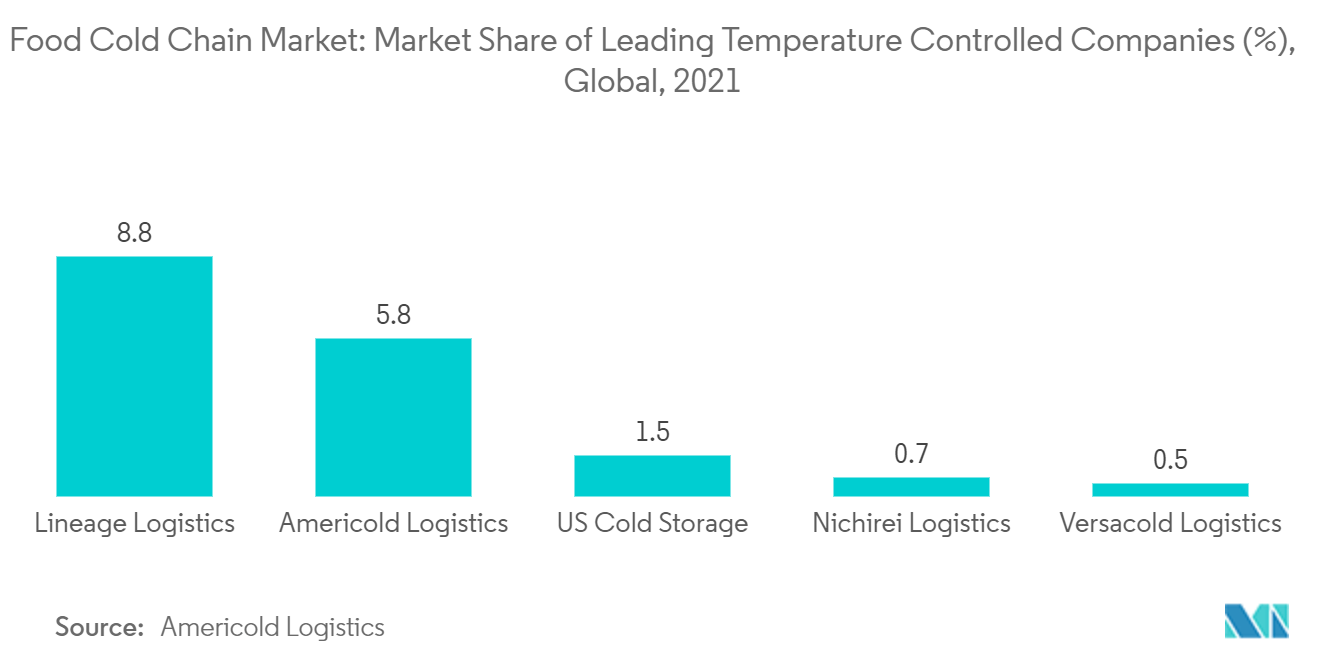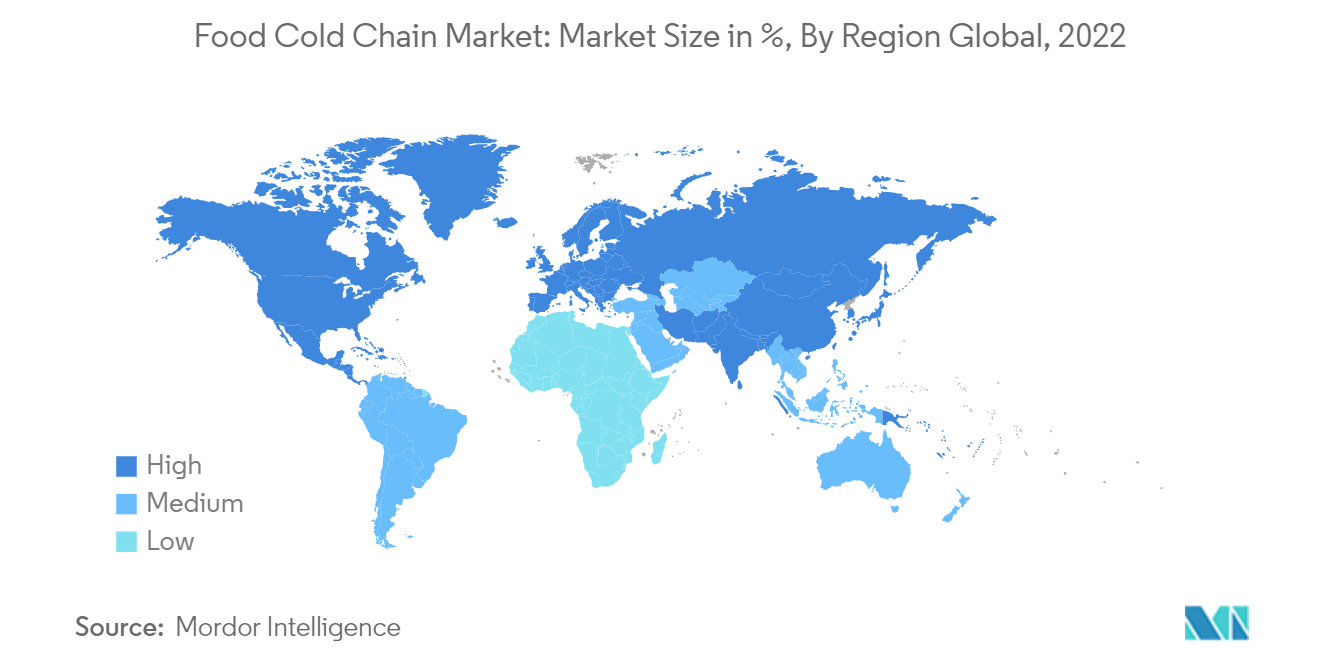Market Trends of Food Cold Chain Industry
Growing Investments in Cold Chain Infrastructure
- The demand for frozen food and products is on the rise, thanks to their convenience and longer storage capacity. As a result, the need for cold storage and cold storage transport is increasing globally. Transportation of sensitive frozen food items, such as ice cream, frozen curries, and frozen canned products, requires proper temperature-controlled facilities to prevent physical or environmental damage.
- In addition, perishable products, such as meat, fish/seafood, fruits, vegetables, and dairy products, are traded in bulk compared to processed products. The shelf life of meat/fish is only a few hours, which has led to an increase in demand for proper temperature-controlled storage facilities. Market players are expanding their cold storage capacities to reduce food waste.
- For example, in May 2022, Lineage Logistics completed a new fully automated warehouse expansion with an additional 45,000 pallet positions for retail and food service customers. This expansion will not only help reduce food waste but also provide customers with more efficient and reliable cold storage solutions.

North America Holds the Largest Market Share
- Seasonality, time-temperature variation, and road accessibility throughout the year drive the demand for food cold chains in the North American market. In addition, consumers in the market are increasingly shifting away from highly processed and unhealthy foods with long shelf lives towards temperature-sensitive and perishable food products, creating momentum for a cold supply chain with advanced technology.
- Furthermore, food wastage has become a significant problem in the North American region. According to a report by the UN Environmental Programme, in 2021, Canadian household food wastage reached 79 kg per capita. With the increasing demand for cold chain storage and transport, market players are launching new transport facilities in the region.
- For example, in October 2022, A.P. Moller-Maersk ordered eight electric trucks from Volvo in Southern California to distribute food and other products. This move demonstrates the industry's efforts to adopt sustainable and environmentally friendly practices while meeting the growing demand for cold chain transport and storage.


